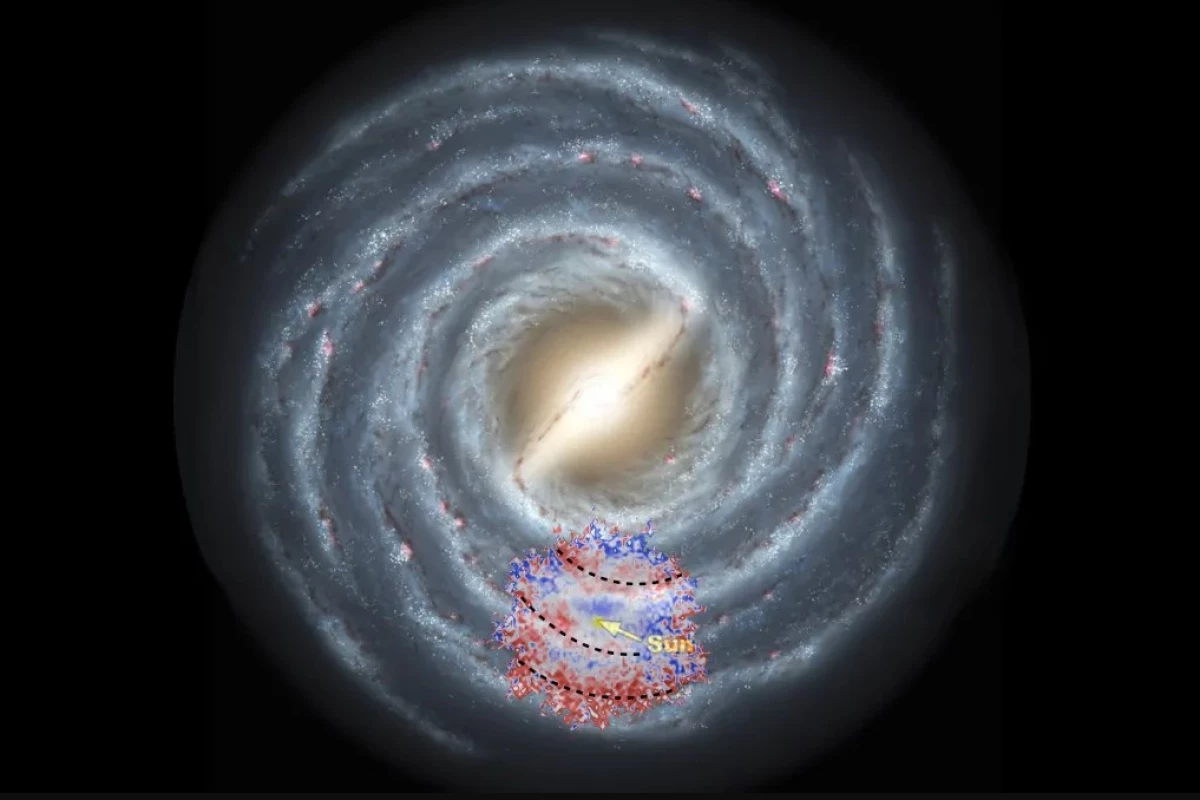A new chemical map of the local region of our galaxy developed by Keith Hawkins at the University of Texas at Austin has unearthed new structural details of nearby spiral arms of the Milky Way to a distance of 32,600 light years from Earth.
Since the 1920s, scientists have recognized that the Sun sits on the edge of one of trillions of galaxies in the universe. However, figuring out the structure of our Milky Way galaxy hasn't been easy.
Learning the structure of other galaxies is relatively easy because we can look at them from a distance, but we sit inside the disc of our galaxy about 30,000 light years from the edge. This makes it very difficult to learn many details beyond the the shape of the spiral arms near us and the fact it's a barred spiral galaxy. Meanwhile, the wide arc on the far side of the galaxy is unknown to us directly due to all the gas and dust obscuring it.
To learn more, Hawkins turned to chemical cartography, which locates objects in the galaxy based on their chemical composition. Using data from the Large Sky Area Multi-Object Fiber Spectroscopic Telescope (LAMOST) and the Gaia space telescope that provided the chemical makeup of two billion objects, he was able to see things that aren't visible using only light.
Hawkins was looking particularly for young stars that are marked by their metallicity, or the higher concentrations of elements heavier than hydrogen and helium. These heavy elements are more prevalent in young stars than in old stars because, as the universe ages, more of these elements are produced.
The first stars in the universe after the Big Bang were made almost entirely of hydrogen and helium with a few trace elements thrown in. As old stars died, especially when they exploded as supernovae, there were more heavy elements for new stars to absorb. Since new stars tend to form on the leading edges of galactic spiral arms where gas and dust is concentrated as if by a passing wave, seeking out their chemical signature reveals details about the arm's structure. Meanwhile, the lack of these signatures shows a gap between the arms.
"A big takeaway is that the spiral arms are indeed richer in metals," said Hawkins. "This illustrates the value of chemical cartography in identifying the Milky Way’s structure and formation. It has the potential to fully transform our view of the Galaxy."
The research was published in the Monthly Notices of the Royal Astronomical Society.
Source: McDonald Observatory





